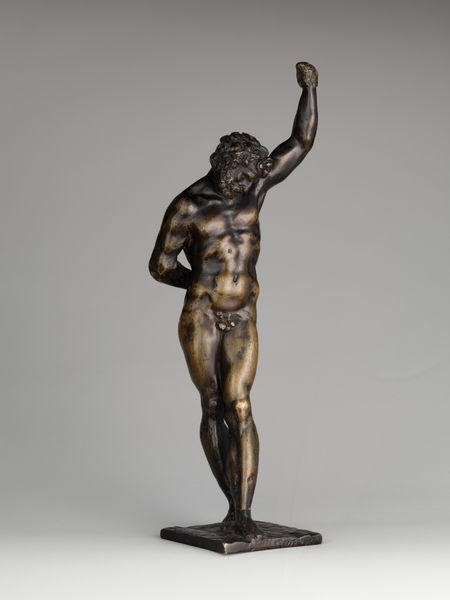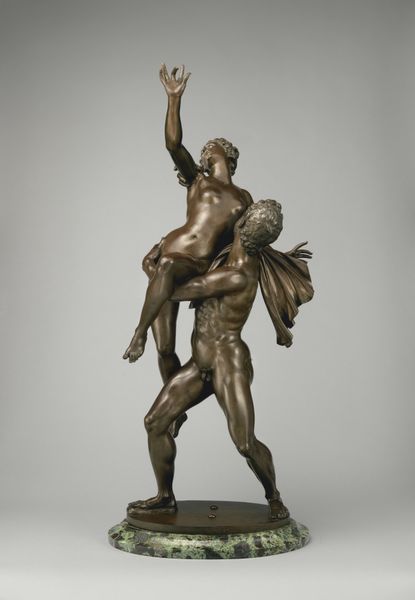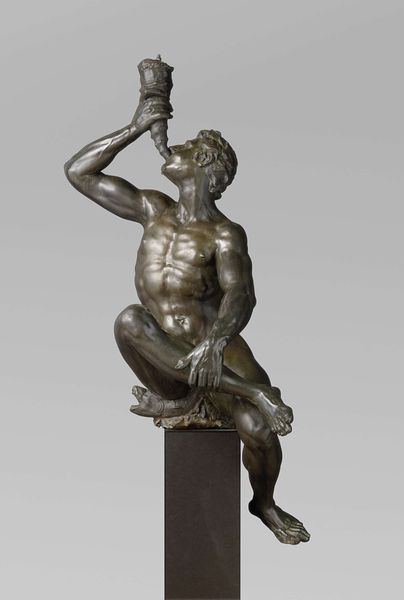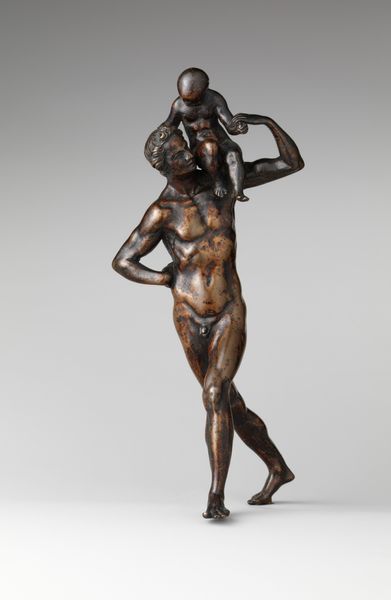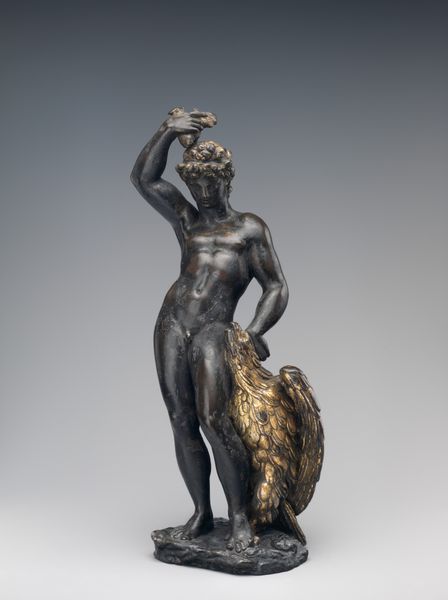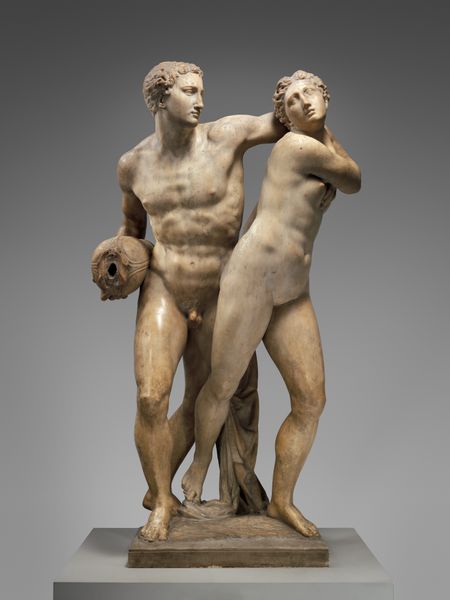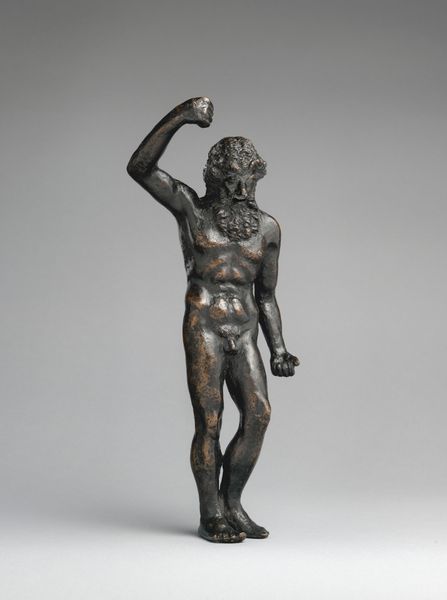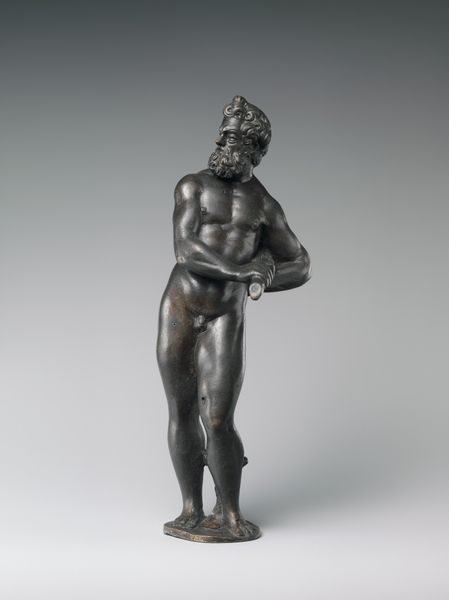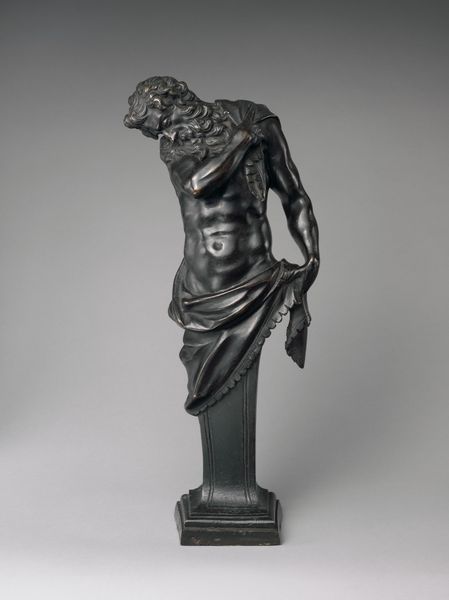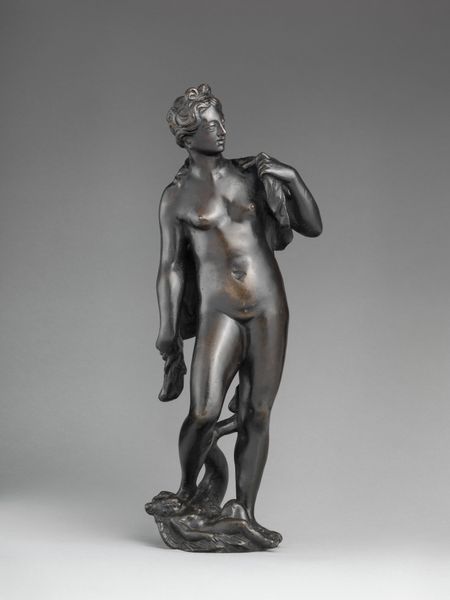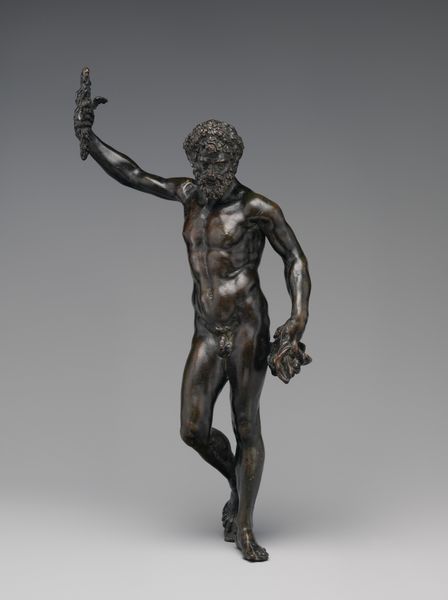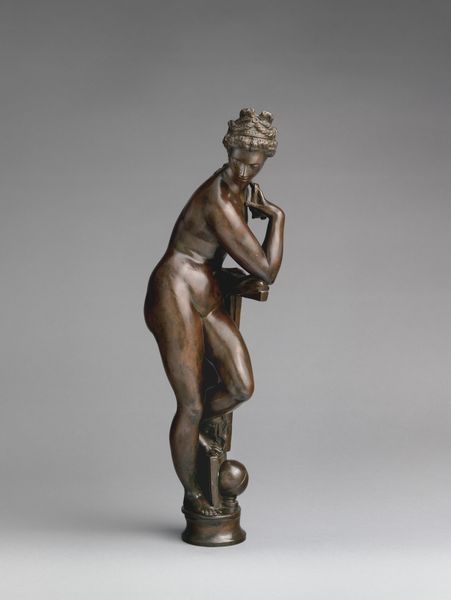
bronze, sculpture
#
bronze
#
mannerism
#
figuration
#
ancient-mediterranean
#
sculpture
#
decorative-art
#
male-nude
Dimensions: Overall (confirmed): 9 × 4 1/4 × 3 1/4 in. (22.9 × 10.8 × 8.3 cm)
Copyright: Public Domain
Curator: This is "Farnese Hercules," a bronze sculpture crafted sometime between 1571 and 1699 by Pietro da Barga. Editor: He seems… thoughtful. Not the victorious hero I imagined. Almost burdened. Is that right? Curator: That's a perceptive reading. Pietro da Barga departs somewhat from earlier depictions. Note his posture, the slight sag in his musculature. Editor: Yes, he leans heavily, almost forlornly, on what appears to be the skin of the Nemean Lion. It seems both trophy and crutch. The golden hue casts long, reflective shadows across his body and face. He doesn't quite strike me as triumphant, almost a hint of defeat. Curator: The material certainly lends itself to that kind of nuanced reading, doesn't it? The Mannerist style allowed artists more freedom to explore emotional complexity. Barga utilizes that space in between triumph and exhaustion. The sculpture captures a quiet moment of contemplation, maybe even vulnerability, rather than loud celebration. It explores heroism and strength, but through the lens of introspection. Editor: The way his gaze is directed downward adds to the somber mood. It's a stunning use of figuration to suggest an inner life. But doesn’t that contradict the traditional image of Hercules as this ultimate symbol of strength? Curator: That tension, that deliberate manipulation of form and theme, is where the power of this piece lies. He captures that moment of self-reflection perfectly in bronze. This isn't simply decorative-art, is it? There is an inherent truth present about aging and coming to terms with your life, perhaps after facing your life challenges. Editor: Absolutely. I walked in here expecting to see a muscle-bound god, all bluster and bravado. Instead, I encountered a surprisingly human Hercules. Curator: Precisely. The Mannerists often favored grace and refinement over the classical pursuit of perfection. Editor: So it appears Barga brilliantly undermined the classical ideal, making Hercules far more relatable, which is an incredible, ingenious feat. Curator: Indeed. An icon, transformed through artistry into something touchingly human.
Comments
No comments
Be the first to comment and join the conversation on the ultimate creative platform.
